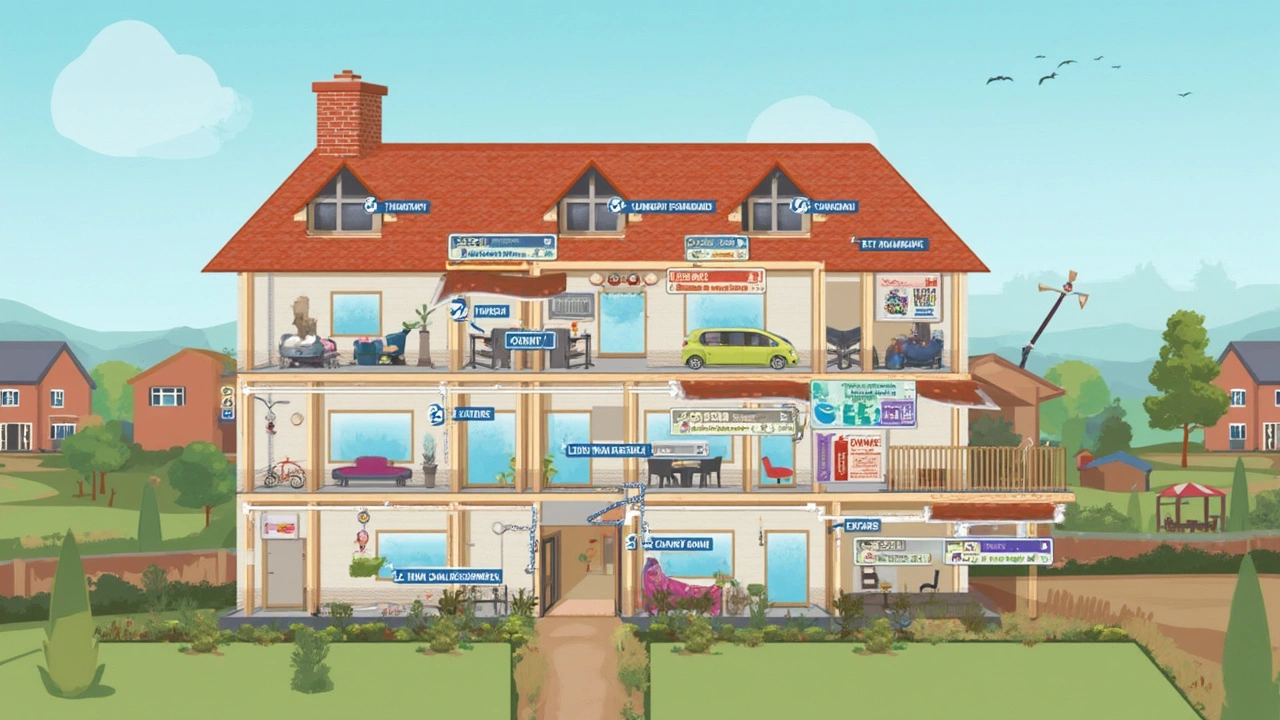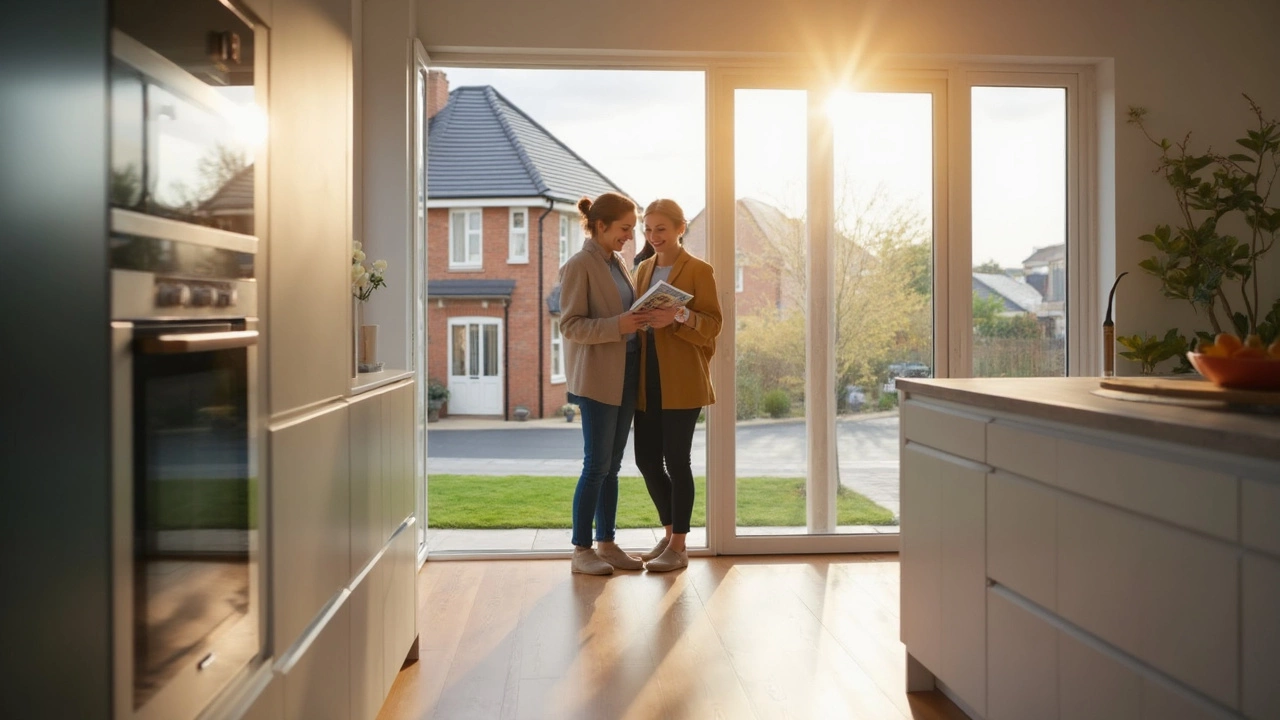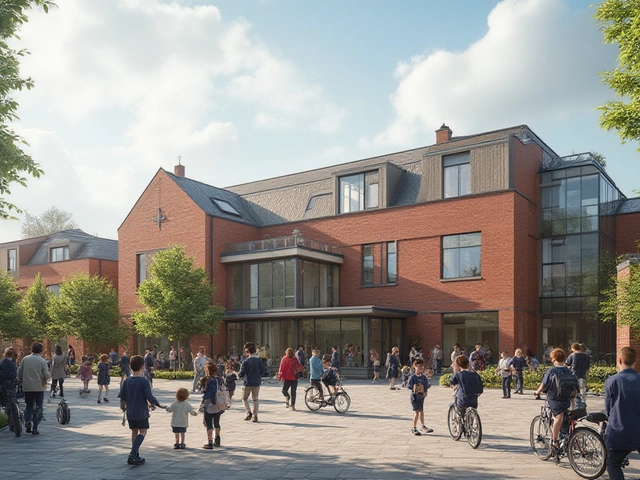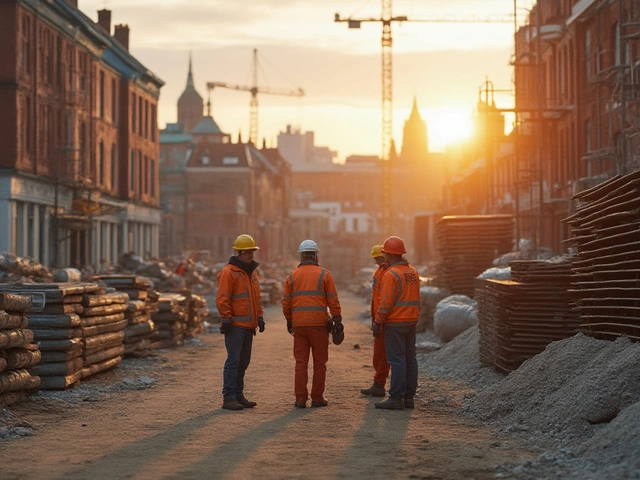Picture this: you finally get the keys to your newly built home, open the front door, and… wait. Where’s the living room light fitting? Why are some windows missing blinds? New builds always look shiny in showrooms, but what’s included when it’s actually yours can be a different story.
Getting clear on what comes standard with a new build saves you headaches and cash. Most people expect a complete, ready-to-live-in house. But the devil’s in the details—flooring, kitchen appliances, gardens, even towel racks, can all be offered as upgrades, not as standard kit. Builders love to show you fully decked-out model homes, but the actual handover might look a bit more ‘bare bones’ unless you ask the right questions upfront.
If you’re checking out new build options, here’s an insider tip: always request the full list of inclusions in writing, not just what’s ‘typical’. Compare this to that stunning display house. Suddenly, things like fitted wardrobes, external taps, or even doorbell wiring stand out. I’ve heard more than one story of folks needing to buy their own mailboxes because no one thought to ask.
- Core Structure and Standard Features
- Kitchens and Bathrooms: What’s Standard?
- Flooring, Paint, and Fixtures
- Appliances: Included or Optional?
- Outdoor Spaces and Landscaping
- Hidden Costs and Smart Upgrades
Core Structure and Standard Features
Every new build starts with basics: walls, roof, windows, and doors. These essentials make your house liveable, but what that actually covers can change a lot depending on your builder and contract. Most houses come with double-glazed windows for better insulation as standard, along with secure front and back doors. Expect solid foundations, full connected plumbing, and pre-installed wiring for early move-in. It sounds obvious, but always check the specification sheet—some builders save cash by using cheaper materials in areas like internal walls or roof insulation.
Heating and cooling systems? You’ll usually find central heating included in the price, especially in the UK and colder regions. Air conditioning is less common as a standard, so that’s something you might need to budget for if you want to stay cool in summer. Electrical sockets get fitted as standard, but fancy extras like USB plugs or under-cabinet kitchen lighting are nearly always upgrades.
Another big one: insulation and building standards. Since 2022, all new builds in the UK, Australia, and most US states must meet strict energy efficiency guidelines. That means your home should have decent roof and wall insulation, low-energy lighting as standard, and draft-proofed windows and doors. If your builder is part of the National House Building Council (NHBC) or a similar warranty scheme, your structure will come with a 10-year warranty. That’s worth its weight if you ever spot issues with the foundation or exterior frame.
- Walls, roof, and windows (double-glazed as standard in most regions)
- Front and rear doors—usually not the fancy stuff you see in show homes
- Basic plumbing and electrical wiring
- Central heating system (region dependent)
- Standard insulation to meet new energy rules
- 10-year structural warranty with most major builders
Here’s a tip: during your walk-through, knock on a few walls and check for solidness, and ask about which areas are soundproofed. Just because something looks finished doesn’t mean it’s built the same everywhere. Bottom line, the new build basics are there, but it’s smart to double-check what makes up your home’s foundation before you put your name on the dotted line.
Kitchens and Bathrooms: What’s Standard?
With new builds, kitchens and bathrooms can be a real mixed bag. Most builders include the basics: fitted kitchen cabinets, benchtops (usually laminate at the base price), a sink, mixer tap, tiled backsplash behind the stove, and just enough electrical outlets to cover the essentials. You’ll nearly always get a built-in oven and hob, but a dishwasher or a microwave? Those often count as upgrades unless you’re buying a premium package.
Some builders will throw in extras during promotions—like a fridge or better tapware—so it’s worth checking if there’s a deal running. Standard cabinets often mean white or neutral finishes, but those designer cupboards and stone worktops you saw in the show home? Those probably add dollars to the final bill. Soft-close drawers or under-cabinet lighting? Don’t count on them being standard unless it says so on your inclusion list.
Bathrooms are much the same story. You’ll get a toilet, basin, and shower enclosure. Sometimes the main bathroom has a basic bathtub too. Most standard new builds offer simple chrome taps, a plain mirror, a tile splashback at the sink, and maybe a towel rail. Heated towel racks, mirrored cabinets, or rainfall showers usually mean dipping into your budget for extras.
- Ask if kitchen splashbacks are tiled or just painted (some builders charge for even a small line of tiles).
- Check if the bathroom comes with vanity storage, or just a pedestal basin with nowhere to stash your stuff.
- Verify the number and style of power points—you’ll want a few more than the bare minimum.
- If the property is described as “turn key,” it should come ready for you to move in without buying extra fixtures or equipment.
Bottom line: get a written list detailing every fixture and finish in the kitchen and bathroom. Compare it to what you actually need, and account for upgrades early so they don’t blindside you in the budget.
Paying close attention to new build features in these rooms saves you from surprises when moving day rolls around.
Flooring, Paint, and Fixtures
Unless you double-check your contract, you’ll find that new builds can be a bit sneaky with what’s actually finished inside. Flooring, for example, is almost never as glamorous as what you see in the display homes. Most standard packages only include basic carpet in bedrooms and cheap vinyl or laminate elsewhere. Want tiles or hardwood throughout? That’s usually an upgrade (and often quite a pricey one).
Some big builders provide a choice of two or three flooring types, but the budget versions are the default. Always ask what each room actually comes with. Realistically, you could end up with bare concrete in areas like the garage or even in main spaces if you didn’t spot the fine print. Here’s a quick look:
| Room | Standard Flooring (Typical) | Upgrades (Extra Cost) |
|---|---|---|
| Bedrooms | Carpet | Better-quality carpet, hardwood, luxury vinyl |
| Living Areas | Vinyl/Laminate | Engineered timber, stone, tile |
| Wet Areas | Basic Tile | Porcelain, patterned tile |
| Garage | Concrete | Epoxy floor, tile |
Paint’s another one that tricks people. Standard internal paint tends to be a single, flat color—usually a shade of white. You don’t get accent walls or feature paints unless you pay for a design upgrade. And don’t expect tough, wipeable finishes in busy areas unless you specify it.
When it comes to fixtures (think lights, taps, handles), entry-level packages stick to no-frills chrome fixtures, basic light bulbs, and plastic switches. Fancy pendant lighting, dimmers, heated towel rails, or rainfall showerheads? Sorry, but you’ll see those in the glossy brochures only. You’ll need to add them to your wish list—and your budget.
If you really want your new build to feel fresh and finished, here’s a checklist to keep you out of trouble:
- Request samples or visit showrooms for all flooring options before signing anything.
- Confirm in writing the paint color, type, and number of coats. Don’t assume the display home is what you’ll get.
- Check if all bedrooms and living rooms have proper, fitted lights (not just bare bulbs).
- Ask for detailed specs of taps, handles, towel rails, and shower fittings (brand and finish).
Builders base their quoted prices on the lowest acceptable standard, because most buyers will add extras as they go. So don’t treat the default list as set in stone—you’re allowed to negotiate or skip certain finishes in favor of your own upgrades after you move in. That way, you control both the look and the spend.

Appliances: Included or Optional?
This is where things get real for anyone eyeing a new build. You might think your house comes with all the main kitchen gear by default, but that’s not always how builders roll. In most UK new builds, as well as in the US and Australia, you’ll usually get a brand-new oven, a hob, and sometimes an extractor fan. But when it comes to extras like a fridge, dishwasher, washer-dryer, or even a microwave, these are often considered upgrades.
Here’s what you’re likely to get as standard (but always check):
- Oven and hob – usually electric. Gas is less common now due to new building regulations and energy efficiency targets.
- Extractor hood – often included, but sometimes it’s a basic model that’s not very quiet.
What might cost you extra?
- Refrigerator or integrated fridge-freezer
- Dishwasher
- Washing machine/tumble dryer
- Built-in microwave
Now, why do builders leave these out? It’s all about the price point. The advertised sales price covers the essentials. Anything above basic often comes as a premium upgrade. You might hear about ‘white goods packages’—these sound convenient, but some buyers end up replacing builder-grade appliances sooner than expected because they’re basic models.
Before you get swept up by stainless steel everything in the show home, ask for a list of included appliances, right down to the model numbers. If your builder lets you choose, see if the upgrade prices are really worth it—or if you can buy better stuff yourself at a lower price. Tip: Negotiate! If your build is at the contract stage but not yet started, sometimes you can get an appliance or two thrown in as a deal sweetener, especially on the last plots of an estate.
Final thing—don’t forget the little stuff. New builds rarely include things like toasters, kettles, or under-counter lighting. Plan your budget for these extras so your kitchen really feels move-in ready.
Outdoor Spaces and Landscaping
Here’s where most new build buyers get tripped up. You walk around a fully landscaped display home, then when the real keys are handed over, your front yard looks like a patch of dirt with a sprinkle of gravel—if you’re lucky. So, what’s normal, and what actually gets included for your garden and outdoor areas?
Standard landscaping for new builds usually means a very basic package, if anything. Unless your contract spells it out, don’t expect mature trees, flower beds, a fancy lawn, or a deck. Most builders focus on the new build structure and leave buyers to tackle the outdoors themselves. Some developers throw in a laid lawn or a few planted shrubs just to tick the box for council approvals, but it’s rarely enough to call it “done.”
Want real numbers? According to a recent HomeOwners Alliance poll, only 14% of UK new builds have a finished garden at handover. The rest usually get topsoil, rough turf, basic fencing, and a slab or two for a patio at best. Here’s a rough idea of what’s typically included by UK volume housebuilders:
| Outdoor Feature | Usually Included? |
|---|---|
| Basic turf or topsoil | Sometimes |
| Boundary fencing | Usually |
| Patio/terrace slabs | Rarely |
| Driveway | Usually |
| Garden planting (shrubs, trees, beds) | Rarely |
| Outdoor lighting | Rarely |
| Garden shed/bins storage | No |
If sprucing up your outdoors isn’t your thing, see if you can pay the builder extra to do the full landscaping. But be careful—these upgrade packages can be pricey, and the quality sometimes doesn’t match what an independent landscaper could deliver. Always make sure upgrades are listed in your contract, not just promised in a sales chat.
- Ask for a site plan showing exactly what you’ll get outside, down to the last slab or planting.
- Check if boundary fences are included (and who is responsible for which side—this can be a legal headache).
- Consider costs for finishing touches: fences, a real lawn, outdoor taps, and pathways easily add thousands to your budget after moving in.
- Look into local council rules—sometimes you’ll need permission for planting large trees or installing garden structures.
Quick tip—before you buy, talk to neighbors in the same development and take a peek at their outdoor areas. You’ll get a real feel for what “standard” means with your builder.
Hidden Costs and Smart Upgrades
There’s nothing like getting an itemized bill for your new build and seeing numbers that weren’t even hinted at during your first visit. Hidden costs can sneak up fast—think site preparation fees, extra charges for running utilities, or even paying for a simple mailbox. It’s not just about what’s in your contract, it’s about what isn’t.
One thing almost every buyer underestimates is landscaping. Basic turf might be included, but extra trees, fencing, driveways wider than the standard, and irrigation often aren’t. According to UK consumer group Which?:
"Buyers are often surprised by how many features they assume come as standard in a new build—things like turf and even flooring can be upgrades, not default options."
Don’t forget connection fees for things like internet, cable, and phone lines. Some builders add these. Others leave you on your own. Even basic items like curtain rails, mirrors, or letterboxes might not be there. Lighting can be a biggie too: downlights in living areas might only be in the model home.
Here’s where you can outsmart the hidden-cost maze:
- Get a breakdown of what’s included—ask for a complete inclusions list before you sign.
- Tour homes from the actual spec level you’re buying, not just the high-end model.
- Budget 5-10% extra on top of the sale price for all the bits and bobs (window coverings, landscaping, fly screens, etc.).
When it comes to upgrades, pick your battles. Spend on things that are a pain to add later—like extra electrical outlets, high-quality insulation, or ducted air con if you live in a hot spot. Stuff like fancy lighting or built-in speakers? It’s usually cheaper to add those after you move in, with the tradespeople you choose. Making smart upgrade choices at the start can bump your home’s value and comfort way up—without blowing your budget.
Bottom line: spotting these hidden costs and choosing the right upgrades up front is one of the best ways to avoid buyer’s remorse on your new build.





